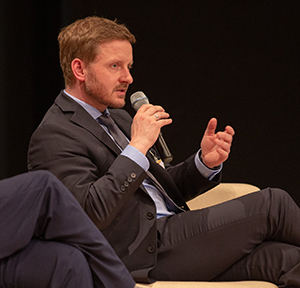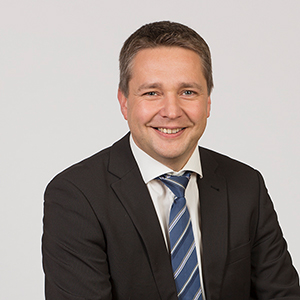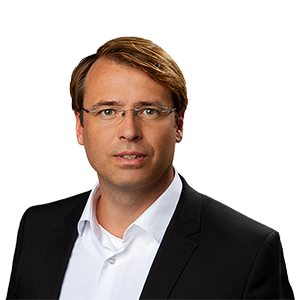The BIMKIT project is advised by an advisory board on technical, strategic and economic issues. For this purpose, the advisory board meets twice a year. It is composed of the following representatives:

Gerd Hembach is a graduate physicist in the field of nuclear physics, where he worked on experimental research of nuclear reactions. After working for 3 years as a specialist engineer in the semiconductor industry, he joined the German Aerospace Center (DLR) in 1989, where he spent 7 years in space flight as a systems engineer and training manager responsible for astronaut training. Since 1996, he has been working at the DLR Project Management Agency, where he has already managed a large number of projects and three funding programs in the thematic environment of Industry 4.0, focusing on production, logistics, robotics and construction. As an experienced scientific speaker of many years, he would like to contribute the scientific/technical know-how and his experience from the funding-political environment.

Marcel Kaupmann heads the digitization and engineering departments at the German Federal Chamber of Engineers. As a graduate civil engineer, he previously worked for several years in various engineering offices, where he gained a wide range of experience as a structural engineer in structural engineering and civil engineering projects. Currently, he is working on topics at the Federal Chamber of Engineers that increasingly need to be thought of together. For planning engineers, digitization raises questions about the implementation of BIM in engineering offices, about BIM training, about standardization and standards, and about digital application and approval processes. At the same time, new digital tools are opening up new perspectives in planning, making it easier to think about buildings from the end or to carry out simulations in operation. This is where digitization meets topics such as sustainability, building in the existing fabric, circular economy and life cycle considerations. BIMKIT can provide important insights at this interface. And Mr. Kaupmann would like to contribute to the success of the project with the valuable experience of the members of the Chamber of Engineers.

Dr. Ines Prokop is a civil engineer and worked as a structural engineer for over a decade. Structural preservation was one of the focal points of her engineering practice. She also conducted research and wrote her doctoral thesis on historic steel and iron structures in Berlin. From her diverse experience, she knows how important but costly it is to have a good inventory of structures. She hopes that BIMKIT will provide much-needed innovative solutions to enable BIM to be used on a larger scale for existing buildings. Since summer 2020, Dr. Prokop has been the managing director of the Bundesverband Bausoftware e.V. (BVBS) and would like to contribute the BVBS network and the know-how of the BVBS members to the advisory board of BIMKIT.

Dirk Röder studied civil engineering at the University of Transportation and the Technical University in Dresden. This was followed by training for the 2nd state examination. Since 1999, Dirk Röder has held various management positions as a government construction engineer in the Free State of Saxony. In addition to a large number of road planning projects, he was also responsible for the major Leipzig City Tunnel project for the Free State of Saxony. As BIM representative of the State Office for Road Construction and Transport, Dirk Röder has been responsible for the introduction of the BIM method in the authority since 2017, in addition to his work as head of unit for construction planning and administration. In addition to dealing with the topic in theory, the practical application of the method has also been tested at the state office for over 2 years. In his function as BIM representative, Dirk Röder represents the state office not only at federal and state level but also in buildingSMART Deutschland e.V.. Here, he is the initiator and spokesman of the BIM traffic routes specialist group, a group of over 65 active people from all construction sectors who are working on the board standardization of BIM in the infrastructure sector as a common goal. Besides planning and construction, the management and operation of the infrastructure stock is the main task of the state office. Reliable inventory models are required for this. Being able to create these efficiently and in high quality will help determine the introduction and acceptance of digital methods in road construction administrations. Being able to contribute one’s own knowledge in this way is both an incentive and a motivation.

Gabriele Seitz graduated in business administration from the University of Applied Sciences in Cologne. Since 2017, she has headed the Digitization Department at the German Federal Chamber of Architects. The unit was founded to accompany the digital transformation in planning and building in terms of professional policy. In 2019, the working structure FederführungPLUS was introduced in order to have the diverse and complex topics of digitalization dealt with by decentralized working groups. Since then, ten groups have been formed to address the topics of the BIM Standard of German Chambers of Architects and Engineers, digital planning in higher education, digital building applications, the interface between chambers and building supervisory authorities, digitization and building in existing contexts, BIM office implementation, protection of intellectual property rights and know-how, a neutral database of building components, standardization, and artificial intelligence.

Wolfgang Schneider is head of the Digital Tools department in the Facility Management division of the Federal Real Estate Agency. With more than 30 years of professional experience in the real estate sector, he has in-depth experience in the introduction and further development of digital tools for processes in the real estate industry as well as the management of corresponding projects lasting several years. Wolfgang Schneider holds a degree in computer science (Distance Learning University of Hagen) and a degree in business administration in the housing industry (Ausbildungswerk der gemeinnützigen Wohnungswirtschaft Ratingen-Hösel). He obtained both degrees part-time, having first passed the first and second state examinations in mathematics and history in North Rhine-Westphalia. As a lecturer at the Berlin School of Economics and Law, he has been teaching the module E-Government Architectures for several years. His interest in advancing the digitization of public administration is evident from his membership in the National E-Government Competence Center, as well as from his presentations and publications on this topic at scientific congresses and in professional journals.

Since 2004, Dipl.-Ing. (FH) Clemens Schickel has been the technical advisor of the Bundesindustrieverband Technische Gebäudeausrüstung BTGA e.V. (German Association of the Building Services Industry), where his responsibilities include BIM. His tasks include advising member companies, conducting a wide range of seminars, and standardization and guideline work at German and European level. He is a member of various committees of the guideline series VDI 2552 “BIM Building Information Modeling” and in the DIN – Normenausschuss Bau, Fachbereich BIM NA 005-13 FB. He also plays a leading role in the new BIMeta association initiative. He is a founding member of the Brussels-based “BIM Working Group” of GCP Europe, the European umbrella organization of tradesmen and HVAC contractors.

Dr. Stefan Trometer studied civil engineering and received his PhD from the Technical University of Munich in 2014. Subsequently, he built up the new business unit “Digital City” at CADFEM GmbH until 2017, which dealt with innovative solutions for urban simulations. Since 2018, he has been responsible for business development and the area of “Urban Simulation” as Managing Director of virtualcitysystems GmbH. Stefan Trometer hopes that the BIMKIT project will provide important impetus for the development of methods for as-built modeling of buildings and infrastructure structures based on Building Information Modeling (BIM). From the perspective of Urban Information Modeling (UIM), the detailed mapping of existing buildings still represents a major challenge. Here, the BIMKIT project could provide important impulses for the refinement and continuation of area-wide semantic 3D city models. Stefan Trometer is certain that the fields of BIM and UIM will increasingly grow closer together, enrich each other and thus form the basis for the Digital Urban Twins of the future.

Fabian Viehrig heads the Building and Technology department in the Energy Building and Technology unit at GdW Bundesverband deutscher Wohnungs- und Immobilienunternehmen. He has been with GdW since 2010. As part of the cooperation with the BBU Verband Berlin-Brandenburgischer Wohnungsunternehmen e. V. (Berlin-Brandenburg Association of Housing Companies), he also supports the BBU’s Technology division in selected projects. In addition to many technical issues involved in building management, the topics of serial and modular new housing construction, sustainable housing, building refurbishment, drinking water hygiene, digitalization of buildings and electromobility have most recently been the focus of his work in the unit. Fabian Viehrig is a graduate engineer and studied industrial engineering in the field of civil engineering at the Technical University of Berlin. The focus was on operational organization and corporate management as well as construction machinery and construction management. The title of his diploma thesis was “Analytical consideration of the methodology for calculating the life cycle costs of real estate, taking sustainability indicators into account”. He worked for DaimlerChrysler Sales Organization Germany for several years in project management for development of an e-commerce application. Before he then turned to the housing industry in 2010, his professional focus was on commercial real estate.

Prof. Dr. Steffen Warmbold studied strategic business management and business informatics in depth and worked for an international consulting and engineering company for many years. He earned his doctorate at the Chair of Construction Management at the Freiberg Mining Academy with a dissertation on the availability model in road infrastructure and then went to the hochschule21 and taught there in the construction department. His field of research was, among other things, in the interdisciplinary planning and construction environment and resulted, among other things, in the research project “BIM Innovation Strategy for Regional SMEs”. With the start-up experiences of BIM Germany in his luggage, Prof. Dr. Warmbold is now active as head of fundamental topics at the Association of Consulting Engineers and is specifically focused on the megatrends: digitalization, sustainability and demographic change. Against this background and in particular the competences of the VBI member companies, Prof. Warmbold would like to usefully contribute the VBI network to the advisory board of BIMKIT.
